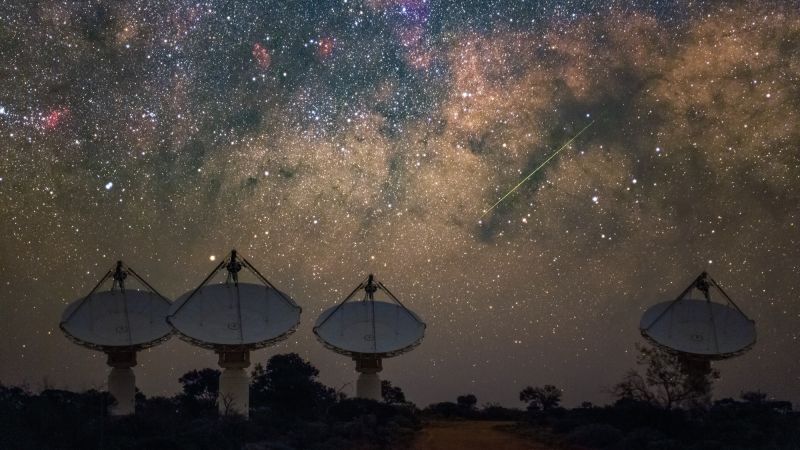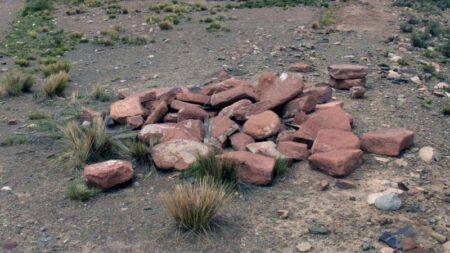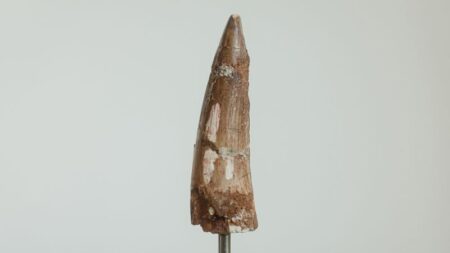In June 2024, astronomers in Australia detected an unusual radio signal that was so potent it temporarily eclipsed everything else visible in the sky. The pursuit of this signal’s origin has consequently raised alarm bells regarding the escalating threat of debris in Earth’s orbit. This intriguing phenomenon has sparked a series of investigations into what could have caused such a striking signal to be emitted so near to our planet.
Initially, the researchers believed they might have stumbled upon an extraordinary celestial event. Clancy James, an associate professor at Curtin University’s Curtin Institute of Radio Astronomy in Western Australia, noted, “We got all excited, thinking we had discovered an unknown object in the vicinity of the Earth.” The data they were analyzing came from the Australian Square Kilometre Array Pathfinder (ASKAP), which consists of 36 dish antennas located in Wajarri Yamaji Country, each towering at about three stories high. The team’s primary focus was generally on identifying signals known as “fast radio bursts,” which are intense outbursts of energy originating from galaxies that lie far beyond our own.
James further explained, “These are incredibly powerful explosions in radio (waves) that last about a millisecond. We don’t know what’s producing them, and we’re trying to find out, because they really challenge known physics — they’re so bright. We’re also trying to use them to study the distribution of matter in the universe.” As research progressed, the astronomers speculated that these fast radio bursts might result from magnetic remnants of collapsed stars known as magnetars.
However, the peculiar radio signal seemed to emanate from an extraordinarily close distance, eventually determined to be approximately 4,500 kilometers (about 2,800 miles) from Earth. This contradicted their initial readings and led them to identify an old satellite known as Relay 2. James explained, “We were able to work out it came from Relay 2 — there are databases that you can look up to work out where any given satellite should be, and there were no other satellites anywhere near.” Although this finding stirred disappointment, the team was intrigued about what could have generated the intense signal.
Originally launched by NASA in 1964, Relay 2 served as an experimental communications satellite, following the first Relay launched in 1962, which provided communication between the United States and Europe. However, by 1967, Relay 2 had completed its mission and succumbed to the fate of space junk, embarking on a mindless journey around Earth until its unexpected signal resurfaced decades later.
The researchers began to ponder a crucial question: Could an inactive satellite reignite after years of dormancy? This inquiry eventually culminated in a formal analysis, soon to be published in The Astrophysical Journal Letters. Through their observations, they noted abnormalities in the signal’s origin, which became evident upon examining the telescope’s graphical data representation. “The reason we were getting this blurred image was because the source was in the near field of the antenna,” James elucidated.
Their observations indicated that the distortion stemmed from how waves reached the outer antennas, showcasing a formidable challenge in accurately pinpointing the source. By filtering out the signals registered by outer antennas, the team was able to focus on the inner antennas spread across a significant area in the Australian outback. The characterization of the elusive signal revealed its immense brightness, which was astonishingly 2,000 to 3,000 times brighter than any other radio data typically recorded by the instrument.
Hypothesizing possible reasons for such a striking signal, the researchers proposed two theories: the first being the sudden release of static electricity from the satellite’s exterior, and the second being the unlikely impact of a micrometeorite. James explained the electrostatic discharge scenario through a relatable analogy, likening it to the sensation of shocking someone after walking on a carpet.
The scientists expressed that these findings raise vital concerns regarding space junk, emphasizing the difficulty in discerning between signals from satellites and those from astronomical sources. Since the inaugural moments of the Space Age, the orbital realm has been cluttered with debris, exacerbated by the collision of dead satellites. With around 22,000 satellites launched thus far, and only half still functional, this poses a risk for ongoing astronomical research.
In conclusion, the analysis conducted by James and his team illustrates that occurrences of narrow radio bursts may be more prevalent than once thought. Their research serves as a reminder of the complex interplay between human-made objects and celestial phenomena in our ever-increasingly crowded orbital environment. The potential misidentification of satellite signals could complicate further astronomical inquiries, urging scientists to remain vigilant in their studies as new groundbreaking experiments come to fruition, such as the anticipated Square Kilometre Array Low Frequency Array (SKA-Low) being developed in Australia.












